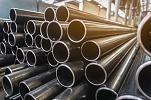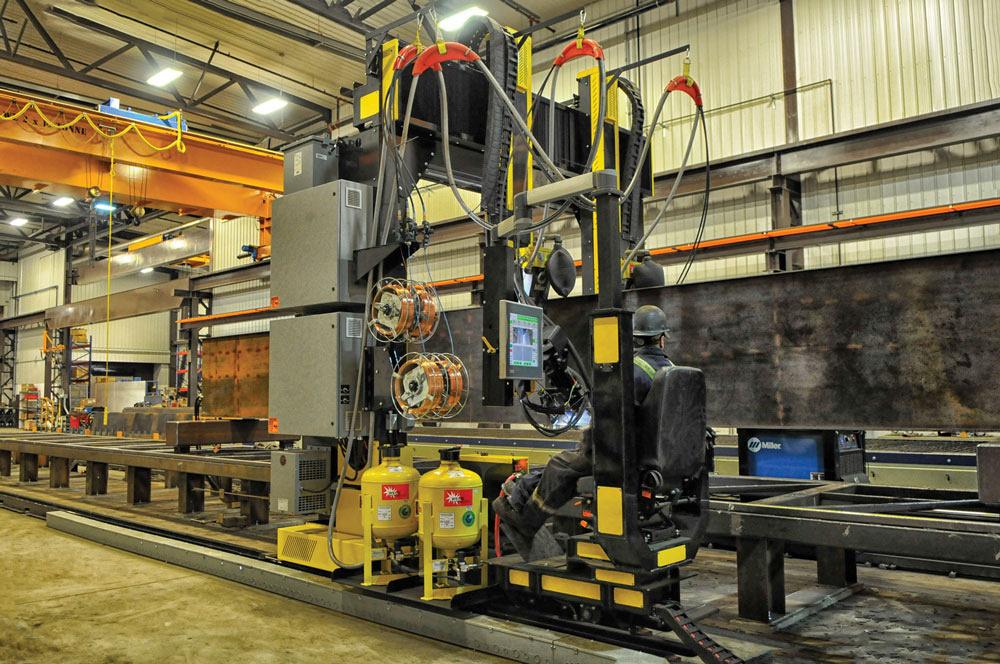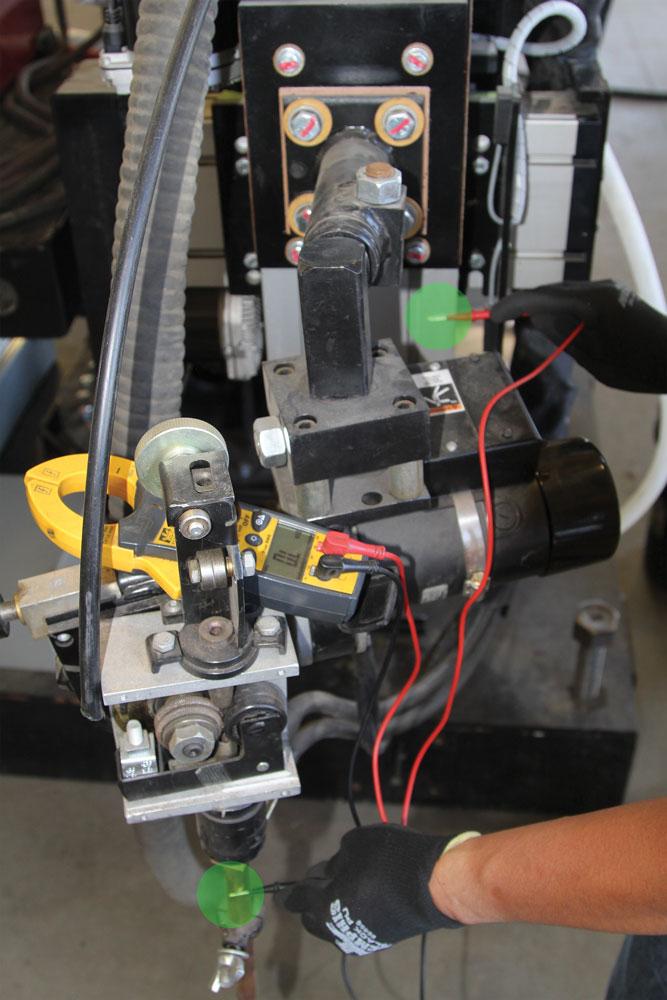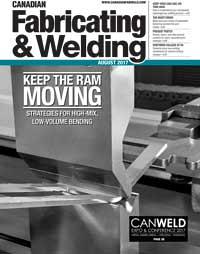Senior Engineer
- FMA
- The Fabricator
- FABTECH
- Canadian Metalworking
3 culprits reduce SAW arc-on time
Troubleshoot your mechanized submerged arc welding process
- By Paul Rieder, P. Eng.
- August 15, 2017
- Article
- Fabricating
Welding is a complex process with many variables. A good manual welder often has years, if not decades, of experience behind a welding mask holding a torch. As the trend toward mechanized and automated welding continues, the skills that are commonplace to most experienced manual welders are becoming a mystery to the average operator of a mechanized subarc process. In addition to this, mechanized welding can introduce new challenges that come with welding faster and with more current.
When troubleshooting a mechanized or automated welding system, you need to identify and resolve a few primary culprits if you are experiencing problems: overheating, lack of electrical current isolation, and a magnetic field.
A typical human welder usually has an arc-on time of only a few minutes at a time; this means that the power source being used has time to cool, as do the cables, torch, etc., as the welder moves from weld to weld. A mechanized or automated process usually is designed to have as much arc-on time as possible. Equipment that previously may have been sufficiently sized for a human welder is now undersized for a mechanized application. Where a human welder may have been welding for 6 minutes out of every 10 minutes, a mechanized system may be welding for more than an hour continuously.
Usual Suspect No.1: Heat
If heat is a culprit in your system, you will likely see some or many of the following symptoms: the mechanized welder stops during long welds without explanation and restarts after a few minutes like nothing happened; connection points of welding cables are very hot and may show signs of melting, or lugs are discoloured; or welding cables are hot to the touch.
Improperly sized the cables in your welding circuit can be a major cause of damage. Insufficient or improper connection of the work lead (or welding ground) to the workpiece is a very common problem. Sometimes cables wear out after a while and they need to be replaced. A properly sized welding cable does not need replacing unless it gets cut.
While a mechanized welder may work for a limited period of time with an undersized cable, it will constantly require replacing. As the price of copper continues to rise, this replacement cost--over time--can dwarf the cost of installing correctly sized cables in the first place. For really long runs with 1,000 amps of welding current, sometimes as many as four 4-O welding cables are needed for the worklead running between the power source and the workpiece.
Loose connections or undersized connections are another cause of overheating. Sufficient contact area between attachment points in the welding circuit is critical. While it is possible to get away with a small contact area and simple clip-style ground clamp for low current ranges (less than 200 amps), increasing the welding current means that more care is needed in the setup of the weld circuit.
Always do the following when setting up your welding circuit: ensure welding lugs are firmly and squarely tightened to the lugs on the welding power source; ensure that the work lead is connected to a clean surface that is free of corrosion and mill scale, rust, and dirt that effectively reduce the contact area and can have the same effect as a loose connection. Arc marks at the work connection to the workpiece are an indication of poor contact between the welding cable and the workpiece.
The very feature of metal that makes welding possible, resistive heating, is most undesirable everywhere else. Electronics are also sensitive to heat, so move sensors such as seam trackers and cameras as far away as possible from the weld to avoid heat. If you are MIG or TIG welding, the greatest source of heat for these components may not be the heat of the molten metal, but rather the radiant heat from the weld itself. Sometimes just putting an opaque barrier between the weld and the sensor is enough to drastically reduce the heat transfer to the sensor from the weld.
When it is not possible to upsize cables or move things away from the welding environment, active cooling is required. Air or liquid cooling can be used to keep auxiliary equipment cool, depending on how close it is to the weld. Air-cooled equipment doesn’t require much to set up as it usually can be run from shop air. Liquid-cooled equipment requires a pump, plumbing, a radiator, and power to run the pump. Torch coolers are a convenient means of cooling not only the welding torch, but also auxiliary equipment. They are readily available from most welding power source manufacturers.
Usual Suspect No. 2: Isolation
The welding circuit is electrical, and it is important to keep it separate from other circuits to avoid problems. Anything that is conductive becomes part of your welding circuit if it touches any part of it. This means if you are using a boom and column manipulator, isolating the components of the welding circuit is critical to make sure you don’t fry the electronics.
During welding, the following components are electrically live; not only should you not touch them, they should be electrically isolated from the rest of the machine and welding components including the wire feeder, the wire, the wire spool, and the torch. Checking the resistance at several locations with a simple voltmeter is a straightforward way to test whether or not these components are isolated from the machine frame.
Usual Suspect No. 3: Magnetism
A current flowing through a wire generates a magnetic field around the wire such that if you place a ferromagnetic material (like steel) in the magnetic field, it will eventually become magnetic. When current flows through a conductor, the atoms in the ferrous material (i.e., steel), start to align themselves in an orderly fashion and the material becomes magnetic, much in the same way that a nail eventually become slightly magnetic in the presence of the magnetic field when you rub a permanent magnet on it many times. If currents are small, the magnetic field generated in the conductor is not as large; however, with significant currents, the field increases in strength and has a more pronounced effect.
When a lot of direct current flows through a conductor, the same thing happens only more so–which means the residual magnetism left over in components that were or are part of the welding circuit or close enough to be within the welding circuit’s magnetic field such as jigs can become magnetized.
A magnetic field can also affect the welding arc and push or pull it, a phenomenon called arc-blow. Typically, when arc blow is a problem, there will be sudden changes in the weld bead profile while all other parameters remain constant. The material deposits erratically in the groove, typically near the ends of long workpieces. Arc blow is more common when welding with DC processes and tends to happen most often when welding on or near something with residual magnetism or near the end of a workpiece.
In addition to magnetism of jigs, long or rectangular workpieces can experience arc blow as you approach the edges of the workpiece. This happens because the welding current needs to loop back to the work lead–it is a circuit, after all. As you approach the end of the workpiece, the current suddenly needs to travel perpendicular to the weld instead of parallel to it in order to return to the work lead, which in turn causes the atoms to align themselves perpendicular to the weld instead of parallel to it.
Magnetization of jigs and arc blow can be mitigated or ruled out to some extent by doing a couple of simple things. Isolate the workpiece from any jigs with about 1 inch of nonconductive material–enough to move the jig out of the magnetic field, which will prevent the jig from becoming magnetized. And use a runoff tab to mitigate arc blow at the beginning and end of the weld to give the current somewhere to change direction other than in the weld puddle on your production workpiece.
Know the Machine and Process
Whether you are welding with a boom and column manipulator, gantry welder, robot, or any other kind of mechanized or automated equipment, you will undoubtedly come across problems that can impact productivity.
Being productive with your system often requires good troubleshooting skills, a good integrator or machine builder who also understands how to design your mechanized or automated system, and an operator who understands both the machine and the process.
Paul Reider, P. Eng., is senior engineer at LJ Welding Automation, 780-466-6658, www.ljwelding.com.
About the Author
Paul Rieder, P. Eng.
4747 76th Ave.
Edmonton, AB T6B 0A3 Canada
1-780-466-6658
subscribe now


Keep up to date with the latest news, events, and technology for all things metal from our pair of monthly magazines written specifically for Canadian manufacturers!
Start Your Free Subscription- Trending Articles
BlueForge Alliance partners with Nuts, Bolts & Thingamajigs to develop Submarine Manufacturing Camps

Portable system becomes hot tech in heat treatment

Orbital tube welding webinar to be held April 23

Cidan Machinery Metal Expo 2024 to be held in Georgia May 1-2

Corrosion-inhibiting coating can be peeled off after use

- Industry Events
MME Winnipeg
- April 30, 2024
- Winnipeg, ON Canada
CTMA Economic Uncertainty: Helping You Navigate Windsor Seminar
- April 30, 2024
- Windsor, ON Canada
CTMA Economic Uncertainty: Helping You Navigate Kitchener Seminar
- May 2, 2024
- Kitchener, ON Canada
Automate 2024
- May 6 - 9, 2024
- Chicago, IL
ANCA Open House
- May 7 - 8, 2024
- Wixom, MI


















